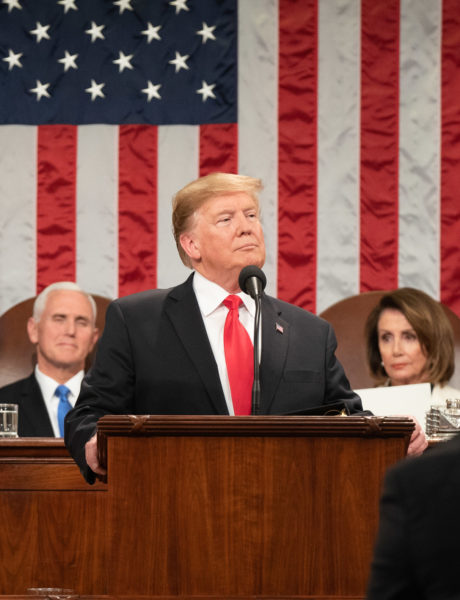Coronavirus: President Trump Signs Largest-Ever US Financial Stimulus Package

President Trump has signed into law the largest-ever US financial stimulus package, worth $2 trillion, as the country grapples with the coronavirus pandemic.
The House of Representatives passed the cross-party bill two days after the Senate debated its provisions.
On March 25, the number of Americans filing for unemployment surged to a record high of 3.3 million people.
As of March 27, the US has more confirmed cases of coronavirus than any other country, with more than 100,000 positive tests.
No Democratic lawmakers were invited to the historic signing ceremony, which was held at the White House, though the president thanked both parties “for coming together, setting aside their differences and putting America first”.
President Trump said the package was “twice as large” as any prior relief bill.
He said: “This will deliver urgently needed relief to our nation’s families, workers and businesses.”
Just before signing the act into law, President Trump invoked the Defense Production Act (DPA), which gives the president the power to force private industries to create items required for national defense.
Coronavirus: US Has Now More Confirmed Cases than Any Other Country
Coronavirus: Russia Postpones Vote on Vladimir Putin Staying in Power
Coronavirus: Prince Charles Tests Positive for Virus
President Trump said the order will compel General Motors (GM) to manufacture much-needed medical ventilators for the federal government.
Earlier in the day, President Trump tweeted that GM had promised to “give us 40,000 much needed Ventilators, very quickly “.
“Now they are saying it will only be 6,000, in late April, and they want top dollar,” he said, threatening to invoke the DPA.
During the bill signing, President Trump said that “tremendous [medical] supplies” would be coming soon, adding: “We’ve had great results on just about everything we’re talking about.”
On March 27, New York Governor Andrew Cuomo announced eight temporary hospitals to meet an expected surge in cases.
He said 519 people had died in the state – the worst-hit in the US – and there were 44,635 confirmed cases.
Democrats and Republicans in the Democratic-led House approved the stimulus package by voice vote on March 27 following a three-hour debate.
House Speaker Nancy Pelosi said: “Our nation faces an economic and health emergency of historic proportions due to the coronavirus pandemic, the worst pandemic in over 100 years.”
Members of the House had been ready to conduct the vote at their homes but were forced to return to Washington at the last minute after a Republican representative from Kentucky demanded a quorum of half the chamber be present.
Thomas Massie – who objected to the stimulus package saying it contained too much spending – also sought to delay proceedings by demanding a formal recorded vote, as opposed to a voice vote, but was overruled.
President Trump vented his fury at Thomas Massie on Twitter, calling him a “third-rate grandstander” and demanding he be thrown out of the Republican party.
The new law enables direct payments to individuals and companies whose livelihoods and businesses have been affected by the pandemic.
It seeks to deliver $1,200 to every American earning less than $75,000 per year and $500 to the parents of every child.
The law also gives money directly to state governments, and bolsters the unemployment benefits program.
Under the law, jobless benefits will be extended to those not normally covered, such as freelancers and workers in the gig economy.
It also offers loans and tax breaks to companies that face going out of business, as one in every four Americans is ordered to remain at home and only go outside for essential needs.
Officials across the US have closed restaurants, bars, cinemas, hotels and gyms in an effort to slow the spread of the virus.
Auto companies have halted production and air travel has fallen dramatically. According to economists, a fifth of the US workforce is on some form of lockdown.
With almost 1,500 virus-related fatalities, the US death toll remains lower than those in Italy and China. But there are virus hotspots in New York, New Orleans and Detroit.
